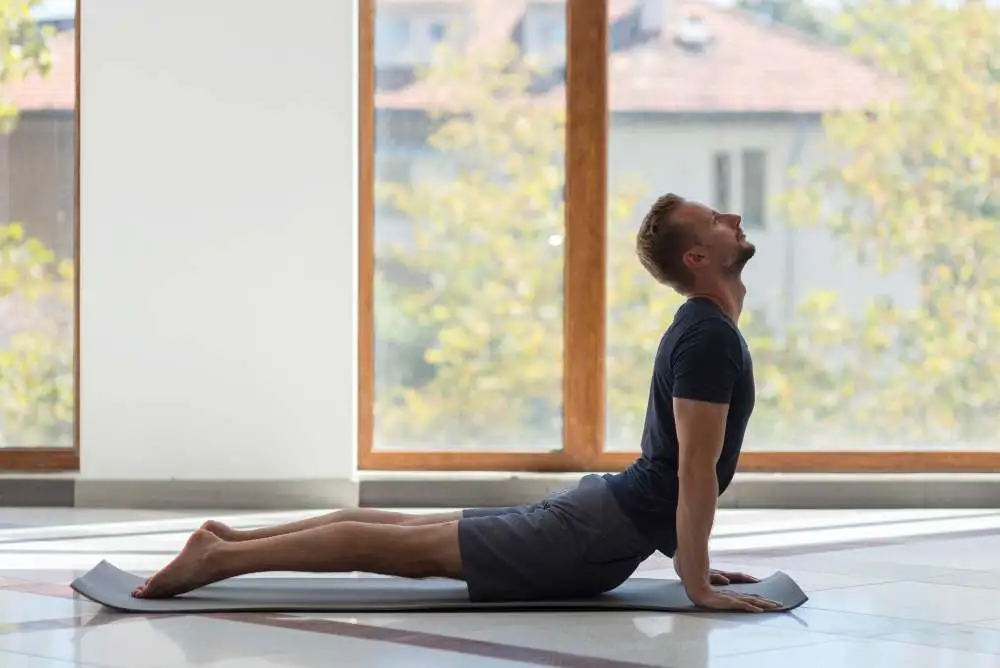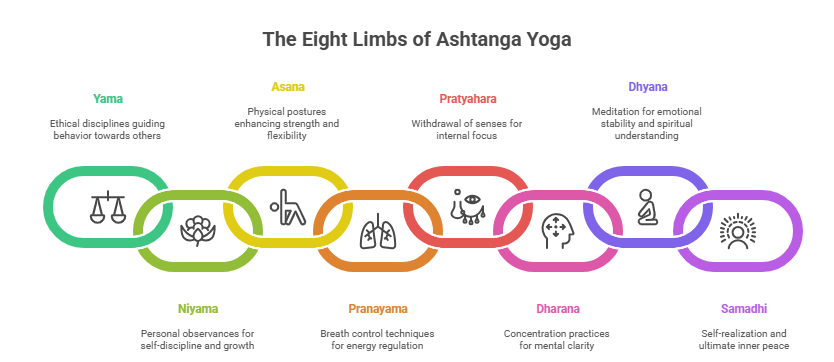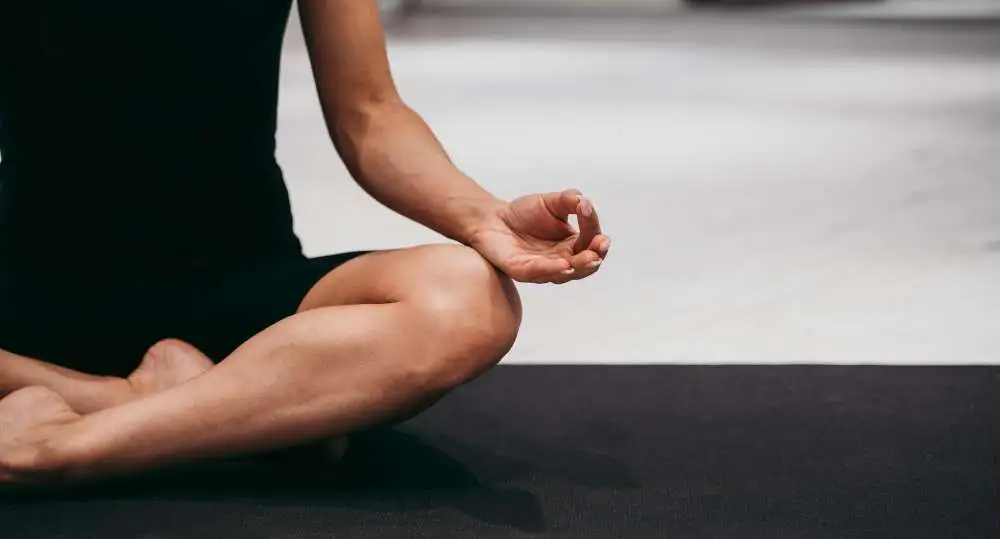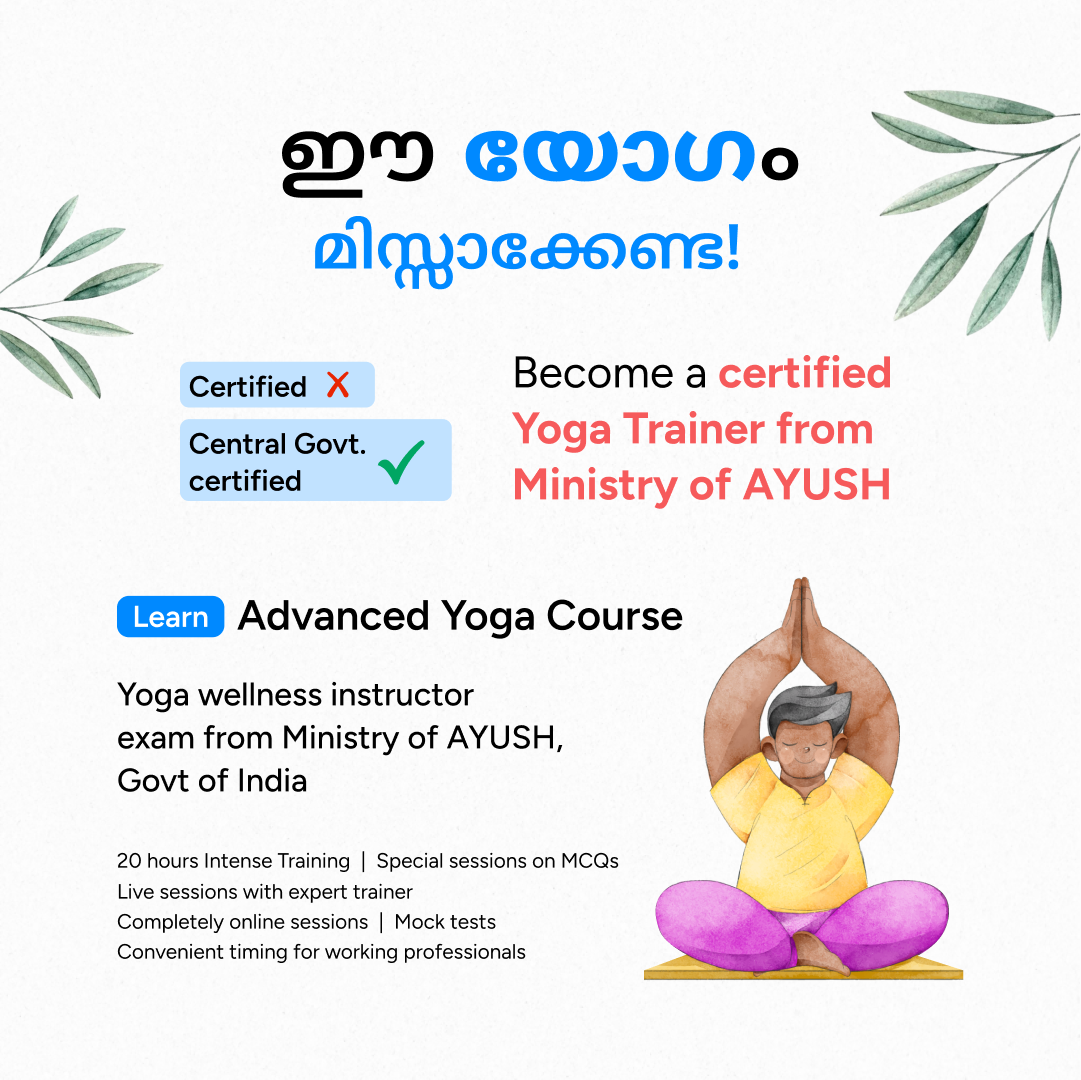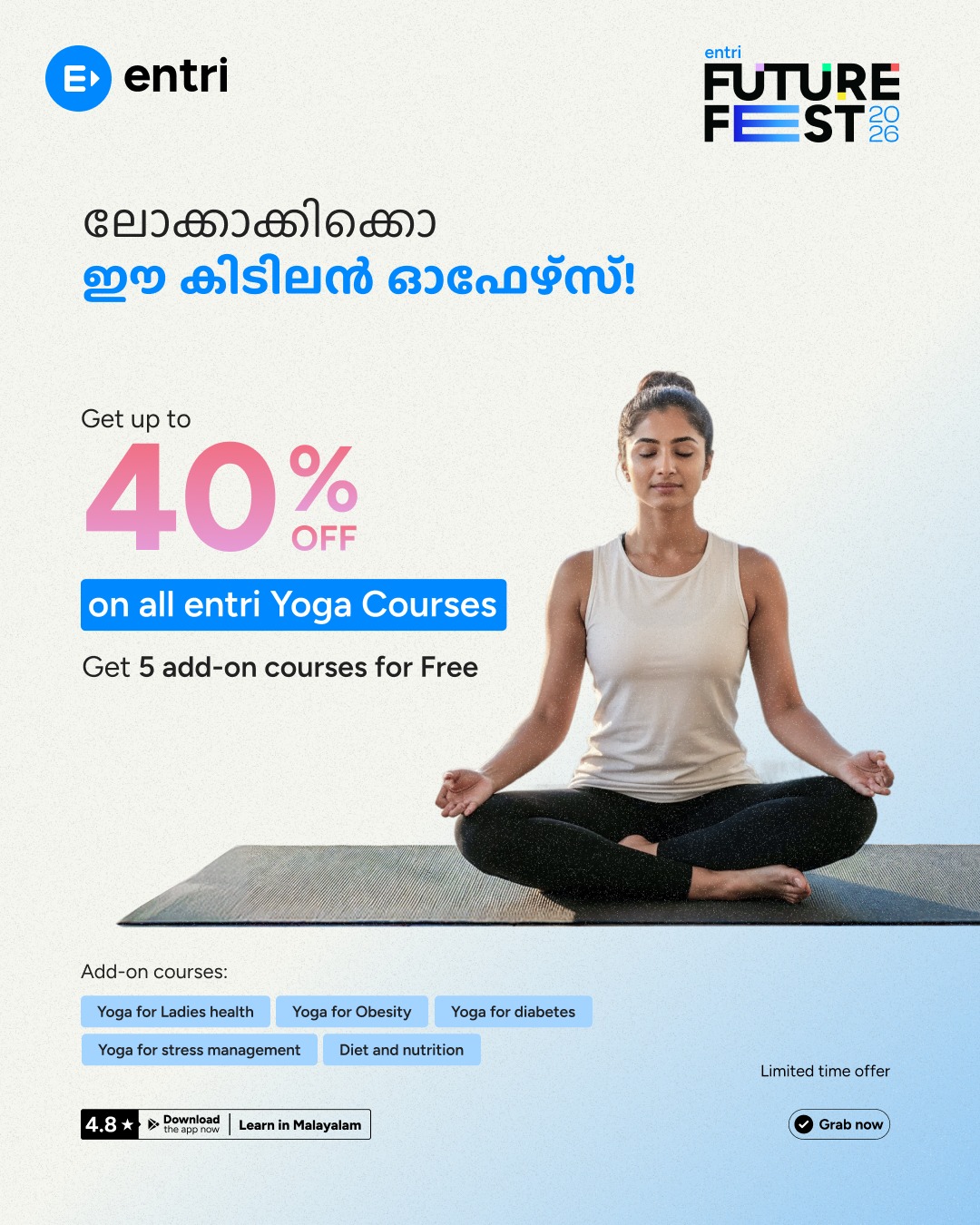Table of Contents
Key Takeaways:
- Ashtanga Yoga is a system, not just a posture sequence. It’s discipline with adaptation, for all students and teachers.
- Myths about rigidity, inflexibility, or exclusion have been busted; modern practitioners and educators benefit most from mindful modification and openness.
- The physical and mental benefits are huge: expect strength, flexibility, focus, and emotional balance.
- For teachers, Ashtanga’s foundations are a blueprint for class structure, student growth, and educational depth.
Introduction
Ashtanga Yoga has become a buzzword in contemporary studios and teacher trainings, attracting students and instructors with its combination of discipline, movement, and meditative concentration. But behind the Insta-poses and Mysore-mystique, what’s the real story of Ashtanga? Do you have to be ultra-flexible and practice at dawn every day? Is it as hard as it looks, or is there potential to teach, learn, and adjust?
This blog is an open handbook for yoga students and instructors on what Ashtanga really is, and what it’s not, and how inviting its spirit to lead can motivate a practice lifetime and energize the next wave of wakeful teachers. We’ll bust the myths, dive into the essence, uncover holistic benefits, and guide you in cultivating a sustainable Ashtanga lifetime, with insights on how the Entri yoga course can fast-track this journey for students and student teachers alike.
Get Certified, Get Confident! Join Our Yoga Teacher Training Course!
Historical Origins of Ashtanga Yoga
1: Which of these is the primary goal of yoga practice?
The spiritually enriching applications of Ashtanga Yoga have been dating back thousands of years to ancient India, where sages utilized these practices to cultivate spiritual healing and self-awareness. The Yoga Sutras of Patanjali outlined these rules for direction in carving a defined route toward liberation (Moksha) and spiritual wellness.
Ashtanga Yoga has become a universally recognized practice and is practiced internationally, merging tradition and modern techniques, making it accessible to all ages and backgrounds. At the center of Ashtanga are its “eight limbs”, a holistic map that extends well beyond movement.
- Yama (ethical guidelines)
- Niyama (personal observances)
- Asana (physical postures)
- Pranayama (breath control)
- Pratyahara (sense withdrawal)
- Dharana (concentration)
- Dhyana (meditation)
- Samadhi (transcendence)
For students as well as teachers, knowing this structure is crucial: Ashtanga isn’t simply a fitness routine, but a lifestyle system designed for physical health, mental clarity, and spiritual growth.
Become a Certified Yoga Instructor
Yoga Teacher Training Course by Entri App: Master authentic yoga techniques, earn certification, and build a successful career as a professional yoga instructor.
Join Now!The Eight Limbs of Ashtanga Yoga
The term Ashtanga literally translates to “eight limbs,” which form the foundation of this yoga system. Each limb shares a wisdom and practices for living at all levels of consciousness:
Yama – Ethical Disciplines
Yamas are universal moral codes on which behavior can be governed to others. These are non-violence (Ahimsa), truthfulness (Satya), non-stealing (Asteya), celibacy or moderation (Brahmacharya), and non-greed (Aparigraha). This is relevant to students and professors: an ethical code that improves the school environment and respect for others helps foster trust and respect in the classroom and strengthens your own integrity.
Niyama – Personal Observances
Niyamas are engaged in self-discipline and personal growth, including cleanliness (Shaucha), contentment (Santosh), austerity (Tapas), self-study (Swadhyaya), and surrender to a higher power (Ishwar Pranidhana). Impact: Develops inner balance and mindfulness that helps instructors lead students through complex asanas and meditations.
Asana – Physical Postures
Asanas are physical aspects of yoga, aimed at increasing strength, flexibility and body awareness. They are a warm-up to the upper practice by lowering the mind and maintaining health.
Pranayama – Breath Control
Breathing is the bridge between mind and body. These controlled breaths regulate energy and stress and improve concentration.
Pratyahara – Withdrawal of Senses
This is intended to encourage turning away in the face of external noise, which allows practitioners to focus on their internal experience.
Dharana – Concentration
Concentration practices help to develop mindset, crucial for meditation and mindfulness in daily life and teaching practices.
Dhyana – Meditation
Meditation is a means for mental clarity, emotional stability, and spiritual understanding. The emotional intelligence and empathy you need as a professor is strengthened through daily practice.
Samadhi – Self-Realization
The ultimate aim for Samadhi is a state of oneness and the deepest form of inner peace. It’s the outcome of a lifetime of practice and attention.
Physical Benefits of Ashtanga Yoga
But Ashtanga Yoga provides substantial physical benefits; mental and spiritual benefits.
1. Improved Flexibility and Strength
Regular exercise improves mobility, strengthens muscles, and is beneficial to joint health.
2. Better Posture and Alignment
Asanas emphasize proper alignment, reducing injury, and improving spinal health.
3. Enhanced Cardiovascular Health
Breathing, movement and dynamic patterns can enhance circulatory and heart function.
4. Boosted Immunity and Metabolism
Holistic practices contribute to overall body function, strengthening vitality.
5. Stress Relief
Controlled breathing and meditation help to regulate stress hormones, such as cortisol, boosting overall well-being.
Mental and Emotional Benefits
Ashtanga Yoga’s systematic approach helps cultivate it.
1. Focus and Concentration
Concentration practices (Dharana) strengthen thinking about the mental and professional aspects. and human decision making.
2. Emotional Stability
During stressful situations, breathwork and meditation activate the mind and stimulate the emotional response.
3. Mindfulness and Awareness
Pratyahara and meditation form an awareness of the moment.
4. Resilience
Trying hard promotes patience, perseverance, and self-discipline.
Become a Certified Yoga Instructor
Yoga Teacher Training Course by Entri App: Master authentic yoga techniques, earn certification, and build a successful career as a professional yoga instructor.
Join Now!Common Myths: Setting the Record Straight
Many yoga aspirants and even seasoned teachers encounter myths that can block true understanding:
Myth 1: Ashtanga is only for the young, fit, or flexible.
Truth: Ashtanga is a scalable practice. All body types, ages, and backgrounds are invited, with adaptations always an option.
Myth 2: Six days a week at dawn.
Fact: Although tradition honors consistency, contemporary Ashtanga embraces flexibility. What really matters is that you practice consistently with your own speed and schedule.
Myth 3: Modifications are “cheating.”
Truth: Props and alternatives encourage safety and development. Even myths like Pattabhi Jois tweaked poses to student needs.
Myth 4: The order is hard and fast.
Truth: Ashtanga developed as teachers and students discovered what works best for different bodies and different lives. Today, thoughtful, deliberate flexibility is regarded as the mark of a seasoned student or instructor.
Myth 5: It’s too rigid and dogmatic for inspired teaching.
Truth: The disciplined progression is an essential instrument for building self-knowledge and rigor but real pedagogy also knows when to melt and tend your pupils as souls.
Why Ashtanga Works: Physical, Mental, and Spiritual Rewards
1. Physical Conditioning
Rigorous and systematic, Ashtanga develops:
- Strength and stamina via demanding standing and seated postures.
- Flexibility through repeated progressive stretching.
- Better coordination of breath and movement, yielding increased mobility and postural control.
- Endurance thanks to the dynamic “flow” of Vinyasa linking each posture.
2. Clarity of Mind and Stress Relief
Breath and movement (Tristhana) synchronised through a set sequence is a moving meditation. For students and teachers this means:
- Less stress and more focus.
- Tools to manage emotions and daily stress.
- More self awareness and mindfulness for teaching and lifelong learning.
3. Lifestyle and Spiritual Integration
Practising the 8 limbs off the mat means:
- Compassion, honesty and discipline in daily life.
- More connection to self and community.
- A sense of purpose for teachers who want to teach with integrity.
Adapting Ashtanga: Practical Guidance for Yoga Students and Teachers
For Newcomers
- Start simple: Focus on foundational asanas before advancing; patience pays off.
- Track progress: Keep a journal or practice log to reflect on growth and challenges.
- Ask for help: Work with certified teachers familiar with anatomy and modifications.
For Educators
- Meet students where they are: Adapt sequences, offer props, and honor diversity.
- Teach the philosophy: Emphasize yama and niyama, not just asana.
- Model self-care: Show students that rest, reflection, and humor are essential, not signs of weakness.
- Encourage lifelong exploration: Ashtanga is a journey, not a destination. Foster curiosity and resilience.
Ashtanga for Yoga Teachers: Why It’s a Gift for Educators
- Provides a structured, repeatable methodology to start each class (great for confidence and professional standards).
- Offers insights into the art of progression, sequencing, and student-centered learning.
- Builds credibility, foundation in classical Ashtanga enhances any teacher’s toolkit, even when adapting styles or merging yoga modalities.
- Empowers teachers to answer questions with authenticity and depth, a must for building student trust and community.
Starting or Deepening Your Path: The Entri Yoga Course Advantage
Don’t know where to start? Entri’s advanced yoga course is meticulously designed for both yoga students and educators:
- Structured learning modules covering philosophy, anatomy, asana sequencing, and effective teaching.
- Video lessons and practice guides developed by certified Ashtanga professionals.
- Community coaching: Feedback, mentorship, and peer discussion for deeper learning, even after certification.
- Ongoing support: Resources to help teachers adapt classes for diverse groups, manage injuries, and integrate yogic philosophy into every lesson.
Whether you want to deepen your practice or build a teaching career, Entri is the pathway where tradition meets adaptation.
Conclusion: Ashtanga Yoga for Lifelong Change
Ashtanga Yoga is more than a set of postures but also a system of mind, body, and soul mastery. For yoga students and educators, learning and practicing Ashtanga Yoga enhances physical fitness, mental clarity, emotional intelligence, and teaching excellence.
The modern approaches to structured learning, such as Entri’s powered Yoga Course, complement those advantages by linking the ancient wisdom with modern teaching practices.
Finally, Ashtanga Yoga emphasizes discipline, concentration, and consistency as fundamental to transformation, not just on the mat but in everything from life and teaching.
And if you embrace Ashtanga Yoga, you are not just gaining health or teaching skills, but walking on a path to lifelong growth, self-awareness, and holistic wellness.
Become a Certified Yoga Instructor
Yoga Teacher Training Course by Entri App: Master authentic yoga techniques, earn certification, and build a successful career as a professional yoga instructor.
Join Now!Frequently Asked Questions
What is Ashtanga Yoga?
Ashtanga Yoga is a structured yoga practice developed by Sri K. Pattabhi Jois. It follows fixed sequences of postures, synchronized with breath, gaze, and flow.
Why is Ashtanga Yoga called the “eight-limbed” path?
“Ashtanga” means “eight limbs” in Sanskrit, referring to Patanjali’s Yoga Sutras, which outline ethics, discipline, posture, breath, focus, meditation, and liberation.
Is Ashtanga Yoga suitable for beginners?
Yes. While it is intense, beginners can start with modifications and guidance. With consistent practice, strength and flexibility develop over time.
What makes Ashtanga different from other yoga styles?
Unlike styles that change sequences, Ashtanga follows a fixed order of poses. This repetition creates mastery, focus, and meditative flow.
What are the physical benefits of Ashtanga Yoga?
Ashtanga builds strength, stamina, and flexibility, improves posture, and supports detoxification through vigorous, breath-synced movements.
Does Ashtanga Yoga have spiritual benefits too?
Yes. Beyond physical fitness, Ashtanga teaches focus, self-discipline, humility, and mindfulness, helping practitioners connect with inner peace.
Why do some people find Ashtanga Yoga difficult?
Its intensity, pace, and discipline can challenge beginners. However, with practice, these same qualities build resilience and patience.
Can Ashtanga Yoga help with stress relief?
Absolutely. The breath-focused, flowing movements calm the nervous system, reduce stress, and promote mental clarity.
What is the Mysore style of Ashtanga practice?
Mysore style is a self-paced practice where students follow sequences individually under a teacher’s supervision, encouraging independence.
How can Entri’s Yoga Course help in learning Ashtanga Yoga?
Entri’s Yoga Course provides structured lessons, expert guidance, and safe progressions to help both students and educators master Ashtanga effectively.


